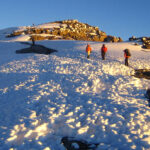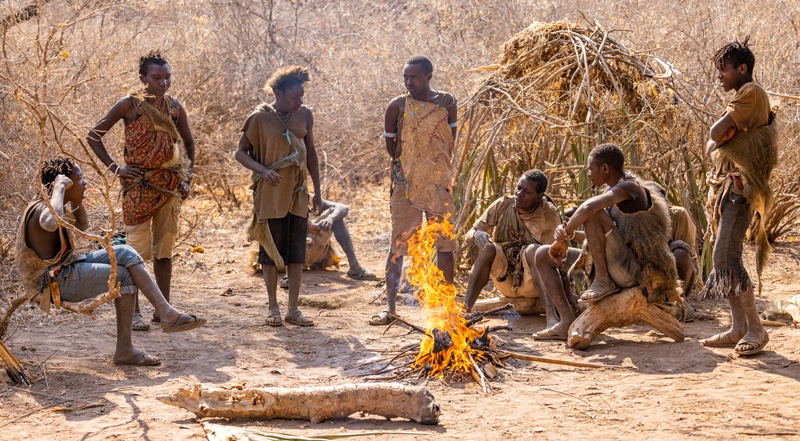

Tanzania & Beyond: A Safari Journey with Takwenya Safaris
Tanzania offers one of the richest wildlife experiences on the planet—where vast savannahs, ancient craters, and snow-capped peaks set the stage for nature’s greatest spectacles. In 2025, safari-goers are looking not only for iconic sightings but also for responsible, low-impact travel. With Takwenya Safaris, you’ll experience both: unforgettable wildlife encounters and a commitment to conservation and community.
Serengeti National Park — The Great Wildebeest Migration
No safari story is complete without the Serengeti. Each year, over 1.5 million wildebeest and zebras thunder across the plains in search of fresh pasture, shadowed by predators.
Takwenya ensures travelers time their journeys to coincide with the most dramatic phases while promoting sustainable lodge choices that minimize environmental impact.
Ngorongoro Crater — Big Five in One Place
Formed from a collapsed volcano, the Ngorongoro Crater is a self-contained Eden. In a single day, it’s possible to spot lions, elephants, buffalo, rhinos, and leopards—all within the crater floor.
Maasai Mara — Cross-Border Safari Adventure
Though in Kenya, the Maasai Mara is the Serengeti’s northern extension and key to the Great Migration story. Takwenya Safaris offers cross-border itineraries, enabling guests to witness the river crossings from both Tanzanian and Kenyan vantage points.
Amboseli National Park — Giants of Africa
Across the border in Kenya lies Amboseli, famous for its large elephant herds roaming beneath the snowcapped peak of Mount Kilimanjaro.
Tarangire National Park — Hidden Gem of the North
Often overshadowed by the Serengeti and Ngorongoro, Tarangire is a haven for those seeking fewer crowds and rich biodiversity.
Takwenya Safaris’ Ethical Tourism Promise
Takwenya Safaris isn’t just about ticking off bucket-list sightings—it’s about protecting them for generations to come.
Why Travel with Takwenya Safaris?
Final Word
From the thunder of wildebeest hooves in the Serengeti to the quiet majesty of baobabs in Tarangire, East Africa’s safari circuit is a once-in-a-lifetime journey. With Takwenya Safaris, you’ll not only see Africa’s wonders—you’ll help preserve them.
From Summit to Savannah: Combining Kilimanjaro Trekking with Cultural Safaris
Tanzania offers something few destinations can match: the chance to conquer Africa’s highest peak and then unwind among world-famous wildlife and vibrant cultures. Increasingly, travelers are choosing “summit-to-safari” journeys—pairing the thrill of trekking Mount Kilimanjaro with the richness of cultural and wildlife exploration.
A Rising Travel Trend: Adventure Meets Culture
Climbers who reach Uhuru Peak (5,895 m) often want more than just a mountain summit photo. They seek a deeper Tanzanian experience—connecting with local people, savoring traditional cuisine, and spotting lions, elephants, and wildebeest on the plains. Combining trekking with safaris offers balance: intense adventure followed by immersive recovery in landscapes teeming with wildlife and culture.
Sample Itinerary: Summit and Safari
Day 1–7: Machame Route (7 Days)
Day 8: Maasai Village Visit
Day 9–12: Serengeti Safari
Optional extension: Ngorongoro Crater or Tarangire National Park for elephants and baobabs.
Recovery & Health After the Climb
Trekking to nearly 6,000 meters pushes the body hard. Smart recovery ensures you’ll enjoy your safari days:
Cultural Immersion Highlights
Beyond wildlife, Tanzania’s people add meaning to every journey:
Takwenya Safaris fosters authentic encounters that are community-led, avoiding staged or intrusive tourism.
Sustainable Travel & Respectful Exchanges
A summit-to-safari trip can be transformative when approached thoughtfully:
Takwenya Safaris emphasizes ethical tourism, ensuring your adventure benefits wildlife conservation and local livelihoods.
Final Word
From the thin air of Kilimanjaro’s glaciers to the roar of lions on the Serengeti plains, Tanzania offers a journey that’s both exhilarating and grounding. By combining trekking, safari, and cultural immersion, you’ll not only challenge yourself physically but also connect deeply with the land and its people.
With Takwenya Safaris, your “Summit to Savannah” experience is crafted responsibly—leaving lasting memories while helping preserve Tanzania’s natural and cultural heritage.
From Summit to Savannah: Authentic Cultural Safaris in Tanzania
Beyond the Big Five to East Africa’s Heart
When most travelers dream of Tanzania, images of elephants in Tarangire or wildebeest herds in the Serengeti spring to mind. Yet, just as unforgettable as wildlife encounters are the human stories that shape this land. Increasingly, visitors are discovering that pairing a Kilimanjaro trek or safari with cultural exploration reveals the true soul of East Africa.
Why Culture Matters as Much as Wildlife
Wildlife safaris inspire awe, but cultural experiences create connection. Sitting around a fire with Maasai elders, learning to grind coffee beans with Chaga farmers, or following the rhythms of taarab music in Zanzibar offers something deeper: insight into the traditions, resilience, and creativity of East African people. These moments transform a trip from sightseeing into story-sharing.
Encounters with Maasai and Samburu Communities
With Takwenya Safaris, such visits are arranged in a respectful, community-led way—ensuring that guests are welcomed as learners, not spectators.
Zanzibar’s Stone Town: The Cultural Crossroads
After the savannah, a short flight takes you to Zanzibar, where the scent of cloves fills the air.
Stone Town isn’t just a destination—it’s a living museum of cultural fusion.
The Shift Toward Eco-Conscious, Community-Based Tourism
Today’s travelers want more than photos; they want their journeys to benefit local people and the environment. Tanzania has embraced this shift with:
Such approaches mean travelers leave behind more than footprints—they leave behind opportunities.
Takwenya Safaris: Bridging Adventure and Culture
Takwenya Safaris curates itineraries that honor both wilderness and people:
Final Word
From the glaciers of Kilimanjaro to the rhythms of Zanzibar, Tanzania is more than landscapes and wildlife—it is people, heritage, and living traditions. By choosing authentic cultural safaris, travelers go beyond the Big Five to embrace the heart of East Africa.